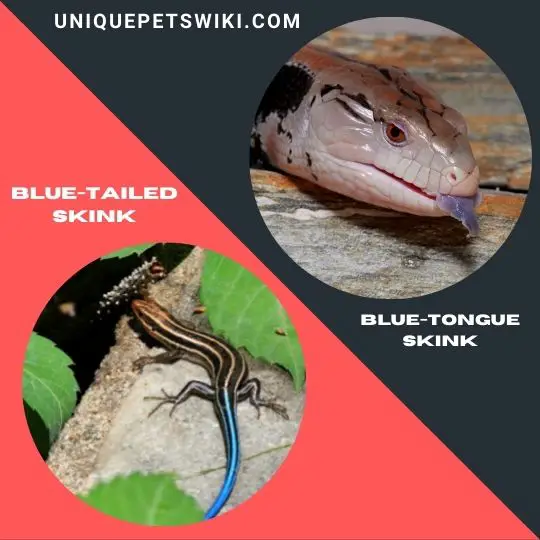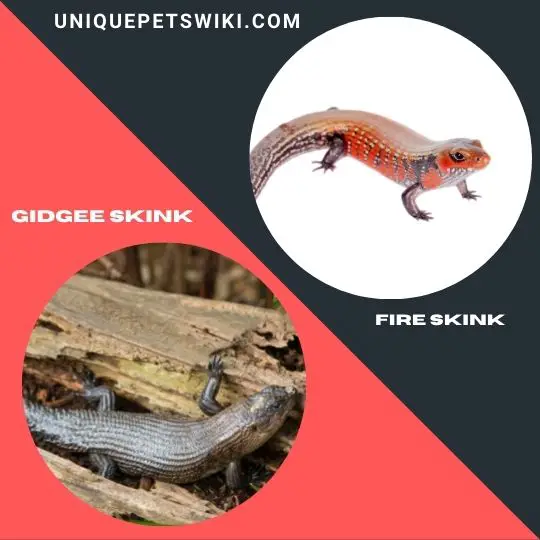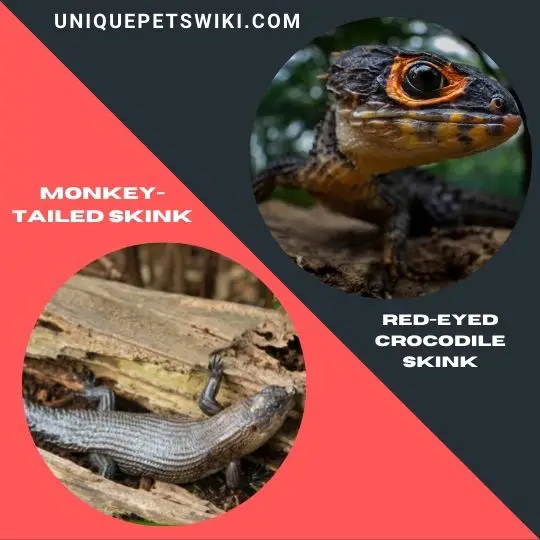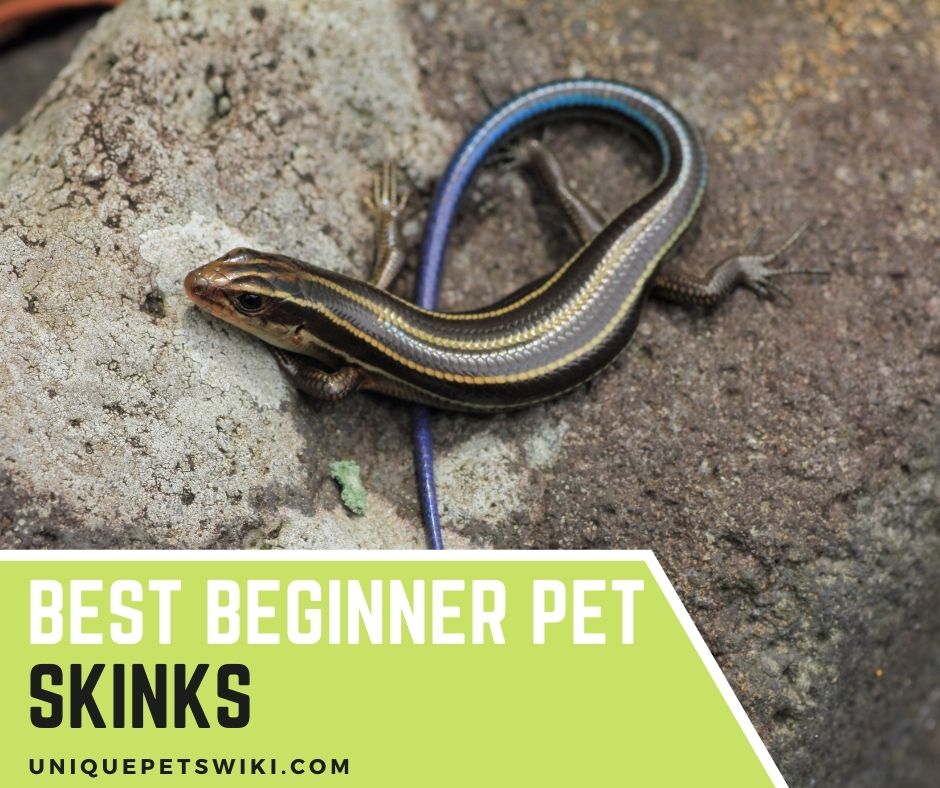What are the best beginner pet skinks to choose from? Whether you have a family with kids or on a small budget, you’ll definitely find a pet of your choice from our list of “beginner-friendly.”
Although reptiles are not like conventional pets, they make good pets and thrive well in captivity. You will find a wide range of reptile species with unique personalities, and the best thing is that you can handle them.
Skinks are a great reptile that beginner hobbyists can keep as a pet. Although they are not as common as other reptile species, they are becoming popular in the last few years in the pet trade. Although there is a wide range of skink species, only a few are considered great domestic pets.
In this article, we will help highlight some of the best pet skinks that are suitable for beginner hobbyists.
Contents
Do Skinks Make Good Pets?
Skinks will make a great pet like other reptile species out there. They have easy care level and maintenance, which makes them suitable for even first-time lizard keepers. Furthermore, they have a docile temperament, and you can handle them once they become acclimatized to you.
It is also quite easy to set up the skink’s enclosure. They will also do well if you house them in an enclosure with little decorations. However, there are many skink species, and not all species suitable for domestic living.
Things To Consider Before Choosing Skinks As Pets
Here are some of the things that beginner hobbyists need to consider before choosing skinks as pets.
Adult Size
Before getting a skink, you need to consider how big it can grow and your plans when it reaches the size. Furthermore, you need to decide the size of a skink that you are comfortable handling.
This is why it is best for beginner pet owners to opt for skinks that are small in size for easy handling. This is because you will need to clean their tank regularly, and you don’t want a reptile that will be too big to move around.
Amount Of Care
Most reptiles require careful monitoring, and you should be prepared to commit both your time and energy to monitor them. This is why you need to go for a species that is easy to care for as a beginner.
Furthermore, by choosing a skink with an easy care level, you can easily find someone to take care of your reptile when you are not around. It will also be easier to find a knowledgeable person to help you out when faced with difficulties.
Handling
Skinks are not the perfect pet if you want a pet that you can handle all the time. However, they have different tolerance levels to handling. You will find some skinks that are tolerant to handling while others are easily stressed when handled.
As a beginner hobbyist, you should opt for a skink species that you can handle as much as possible.
Enclosure Requirement
You need to provide an escape-proof enclosure with enough space for your skinks to move around. Furthermore, most skinks usually thrive well if you house them in a well-planted vivarium.
As a beginner, you should opt for smaller skink species because it is easier to set up a vivarium for them. However, you can also keep skinks in a sterile enclosure with paper substrates and some accessories.
You also need to ensure your skink enclosure is not too small because you will need to consider several factors like routine maintenance, sanitizing, and so on.
The Space Available In Your Home
Some skinks like monkey-tailed skinks need a fairly large enclosure to keep them happy. However, some skinks do not need a large enclosure to keep them happy.
As a beginner skink owner, you need to consider the space you have in your home before deciding on the skink species suitable for you. You can research the enclosure requirement of each species before you make this decision.
Diet
Diet is an important factor that you need to consider as a beginner hobbyist before choosing a pet. Most skinks species are carnivorous, but you will find some species that are herbivorous. This means you can easily opt for the herbivorous skink species if you don’t want to feed your skink with bugs.
Best Beginner Pet Skinks
Here are some of the best species of skinks that beginner hobbyists can keep as a pet.
| Beginner Pet Skinks | Size | Price |
| Blue-tongued skink | 1-2 feet | $150-$5000 |
| Blue-tailed skink | 4-8 inches | $15-$50 |
| Schneider’s skink | 13 inches | $37-$45 |
| Fire skink | 15 inches | $20-$100 |
| Gidgee skink | 7-10 inches | $550-$2000 |
| Red-eyed crocodile skink | 1.5 – 10 inches | $130 – $280 |
| Monkey-tailed skink | 32 inches | $450-$650 |
| Ocellated skinks | 20 inches | $10-$20 |
| Common garden skinks | 3-6 inches | $10 |

Blue-Tongued Skink
The blue-tongued skink can be considered the most popular skink among reptile keepers. They originate from Australia and New Guinea, and you will find them in a wide range of habitats, from desert to open forests.
You can easily identify them by their bright blue tongues used for defensive displays. Blue-tongued skinks are suitable for beginner reptile owners due to their docile temperament, and it is easy to care for them.
However, they are relatively large and can grow to around 1-2 feet long. Despite the fact that there is a wide range of blue-tongued skink species, they all need similar care.
The best thing about blue-tongued skink is that they are omnivorous reptiles, making it easy to source for their food. They can live for about 20 years under optimal care and need a warm and spacious enclosure to keep them happy.
Blue-Tailed Skink
The blue-tailed skink is a group of skinks originating from North America, especially the southeastern part of the United States. You will find them in a wide range of habitats, especially from moist areas to mixed forests. They are also known as the five-lined skinks.
Blue-tailed skinks usually have a bright blue tail with five distinctive stripes. They have color dimorphism as the male remains colorful their whole lives while the female will lose their color as they age.
They are smaller than blue-tongued skinks, and they can grow to about 4-8 inches long. The blue-tailed skinks are perfect for beginner reptile owners because of their docile temperament and easy-care level.
Although they are terrestrial reptiles, they are great climbers as they climb walls and obstacles to avoid danger. They have a short lifespan and can live for 6-10 years.
Schneider’s Skink
Schneider’s skink originates from regions that stretch from Algeria to India. You can identify them by their light-colored ventral surfaces, plus they have brown to grey dorsal surfaces. They are quite attractive with their yellow to orange spots found along their back.
Although they are not as popular as other skink species, they are mind-blowing pets for beginner keepers. They are fairly large in size and can grow to around 13 inches long. You will need to keep them in a brightly lit enclosure with lots of hiding spots.
The best thing is that they are not picky eaters and will thrive on an insect-based diet. Schneider’s skinks are known to have varying temperaments and can be flighty when you first get them. However, they will calm down over time, and you can handle them regularly.
Fire Skink
The fire skink is considered by many as the most beautiful skink due to its lovely colors. They originate from tropical regions of West Africa. You can identify them by their vibrant red color with a mind-blowing yellow and orange pattern that looks like a fire.
A fascinating thing about fire skink is that their mood usually affects their coloration.
Fire skinks usually grow to about 15 inches long, and you will need to house them in an aquarium that is 40-gallon or more. Furthermore, they are completely terrestrial creatures and will need a large terrarium with many floor space areas.
Fire skinks are a popular pet for beginner hobbyists because they are not aggressive, easy-care level, have a milder temperament, and are quite shy. They are also well adapted to handling, and you can even feed some species by hand. Fire skinks can live for about 15 years under optimal care.

Gidgee Skink
Gidgee skinks are unique skink species that originate from Australia. They are considered to be social animals as they are usually found in groups instead of living alone. Furthermore, they can grow to about 7-10 inches long, and you will need to house them in a 40 gallons tank.
Unlike most reptiles, Gidgee skinks need a higher temperature and a basking area with about 120℉ to keep them happy. They are fast-moving reptiles both inside or outside of their tank and don’t do well with handling.
The best thing is that they are omnivorous reptiles and will eat a wide range of insects and vegetables. Gidgee skinks are a perfect pet for a beginner reptile keeper that wants to keep a group of unique reptiles that are very active.
They have a long lifespan and can live for more than 20 years under optimal care.
Red-Eyed Crocodile Skink
Red-eyed crocodile skink is a unique armored skink that originates from the tropical forests of Papua New Guinea. They have a crocodile-like appearance and ridge rows that travel down their back with a helmet-like head.
You will surely be mesmerized once you set your eyes on them. Although red-eyed crocodile skinks are not as popular as other skinks, you will have no trouble getting one of these. They are suitable for beginner reptile keepers as it is quite easy to care for them.
They can grow to about 1.5-10 inches long, and you can keep two skinks in a 10-gallon tank. Crocodile skinks are considered to be crepuscular creatures as they are active at dawn and dusk. They feed mainly on insects and can live for about 5-12 years under optimal care.

Monkey-Tailed Skink
Monkey-tailed skinks got their name from its prehensile tail that they use to grab onto branches. They are also known as the Solomon Islands skinks. Unlike most skink species, monkey-tailed skink prefers to spend their time in the tree instead of the ground.
Monkey-tailed skinks are social in nature, and you will find them in a small colony called a circulus. They can be regarded as large lizards and can grow to about 32 inches long. They are strictly herbivorous in nature, making them suitable for beginners who do not want to touch feeder insects.
However, monkey-tailed skinks are nocturnal animals; that is, they become active at night. Furthermore, they have a long lifespan and can live for about 30 years under optimal care.
Ocellated Skinks
Ocellated skinks originate from Italy, Greece, Malta, and Africa. You can easily identify them by the brown to yellow pixelated patterns on their scales. They are known to be a lengthy species of skink and can grow to about 20 inches long.
They are suitable for beginner reptile keepers because it is quite easy to care for them. The ocellated skinks love basking in the open ground, and you don’t need to buy logs or perches for them. However, you will need to provide them with a shallow pool where they can soak in.
Ocellated skinks have a short lifespan and can only live for about eight years with optimal care. Although you can keep two or more ocellated skinks in the same enclosure, the males can be territorial with one another, and you should keep an eye on them.

Common Garden Skinks
Common garden skinks are considered among the smallest species of skinks that you can keep as a pet. They originate from Australia and can also be found in the wilds of Africa, the USA, and Europe.
You can easily identify them by their browny black color and may have a dark shade of red when basking in the sun. Common garden skinks can grow to about 3-6 inches long and can live for about 2-3 years under optimal care.
Common garden skinks are perfect for beginner keepers because you can easily handle them without any issue.
Note: there are regulations against trapping common garden skinks in the wild, and you should only buy them from a reputable breeder.
Wrapping Up
Skinks are a mind-blowing group of lizards, and some of them make a perfect beginner pet. Furthermore, there is a wide range of skinks species out there, making it possible to choose a species that suits your style.
However, before you buy a pet skink, you should research the species and be sure that you can take good care of it. We hope our list helps you to find a pet skink that will suit you and your family.
